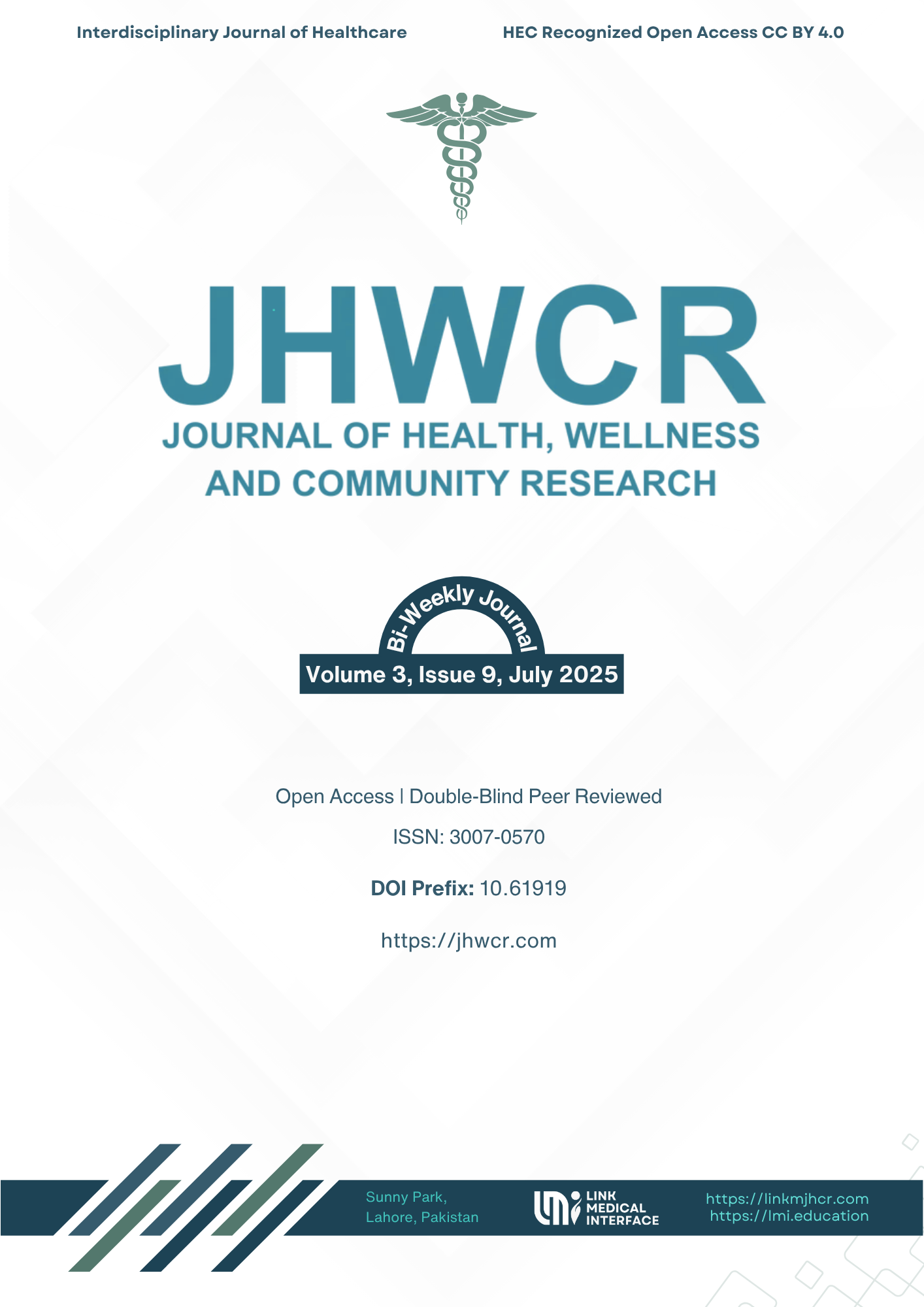Comparison of Outcome of Primary Closure with Ileostomy in Enteric Perforation
DOI:
https://doi.org/10.61919/bvcw8w79Keywords:
Enteric perforation; wound infection; primary closure; ileostomy; typhoid fever; randomized controlled trialAbstract
Background: Enteric fever remains a significant health problem in low-resource settings, often leading to complications such as ileal perforation that require urgent surgical management. The choice between primary closure and ileostomy remains controversial due to differing outcomes in terms of wound infection and hospital stay. Objective: To compare wound infection rates between primary closure and ileostomy in patients with enteric ileal perforation. Methods: This randomized controlled trial was conducted at Lady Reading Hospital, MTI Peshawar, Pakistan, between October 2024 and March 2025. Eighty-six patients aged 18–75 years with radiologically confirmed ileal perforation and positive typhoid serology were randomized to primary closure (Group A) or ileostomy (Group B). All surgeries were performed by a single experienced surgeon. Postoperative wound infection rates and hospital stay were compared using Chi-square and t-tests, with significance set at p<0.05. Results: Group A showed a significantly higher wound infection rate of 34.9% compared to 14.0% in Group B (p=0.024; OR 3.29, 95% CI 1.10–9.87). However, Group A had a shorter mean hospital stay (7.23 ± 0.92 days) than Group B (10.20 ± 1.61 days; p<0.001). Education level was significantly associated with wound infection (p=0.04). Conclusion: Ileostomy significantly reduced wound infections compared to primary closure, suggesting its advantage in managing enteric perforation, particularly for high-risk patients, despite longer hospitalization.
Downloads
Published
Issue
Section
License
Copyright (c) 2025 Noor Habib, Naeem Mumtaz, Shah Hussain, Faran Shah, Abdur Rahman, Muhammad Iltaf (Author)

This work is licensed under a Creative Commons Attribution 4.0 International License.


